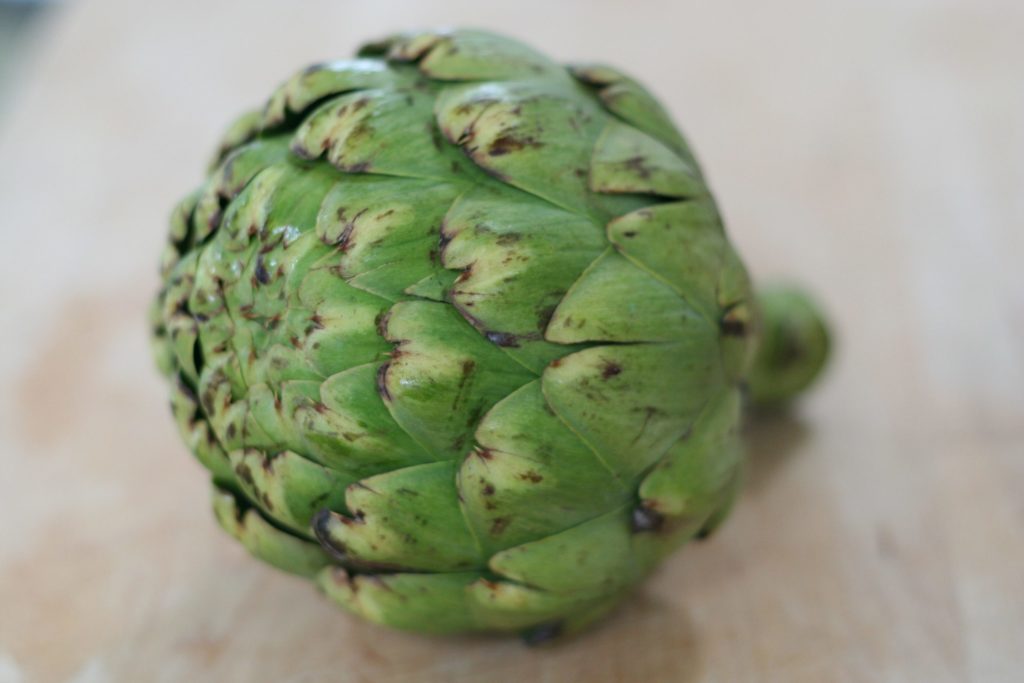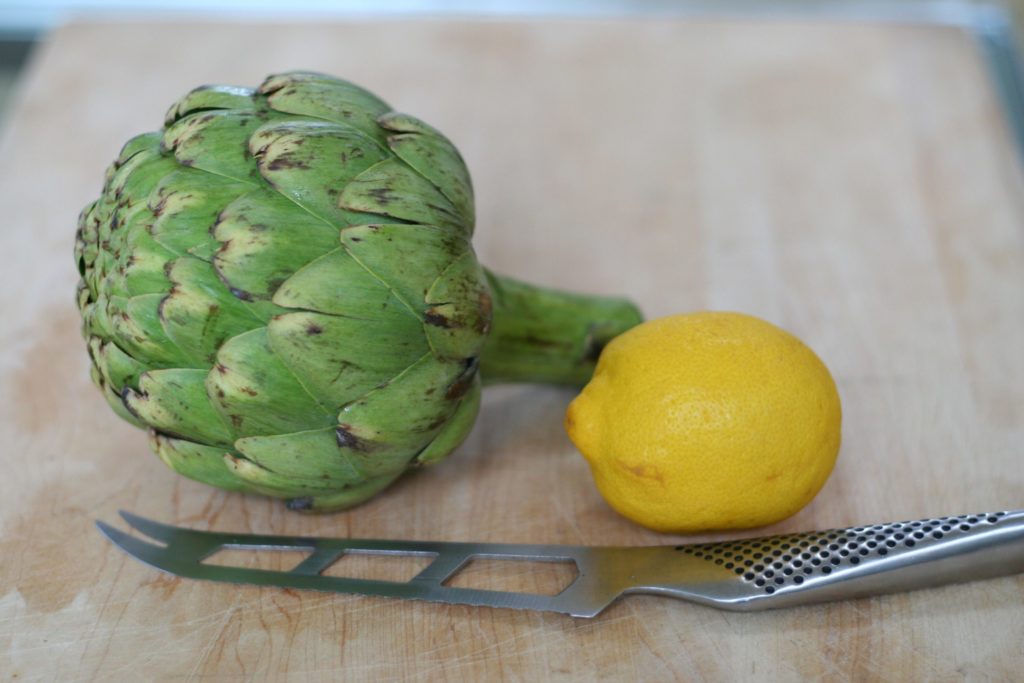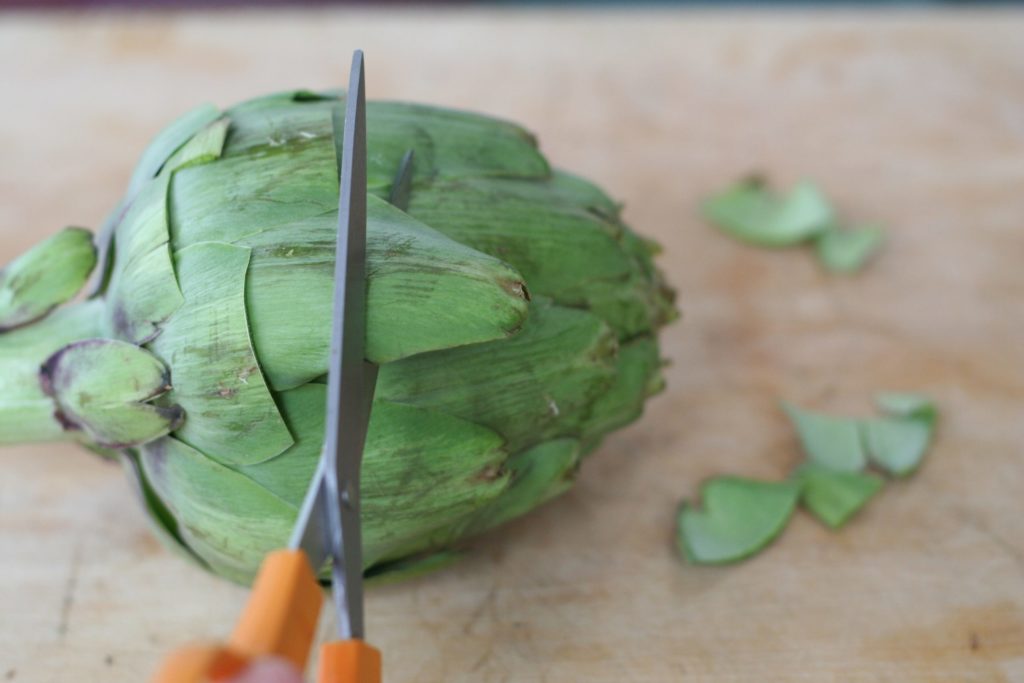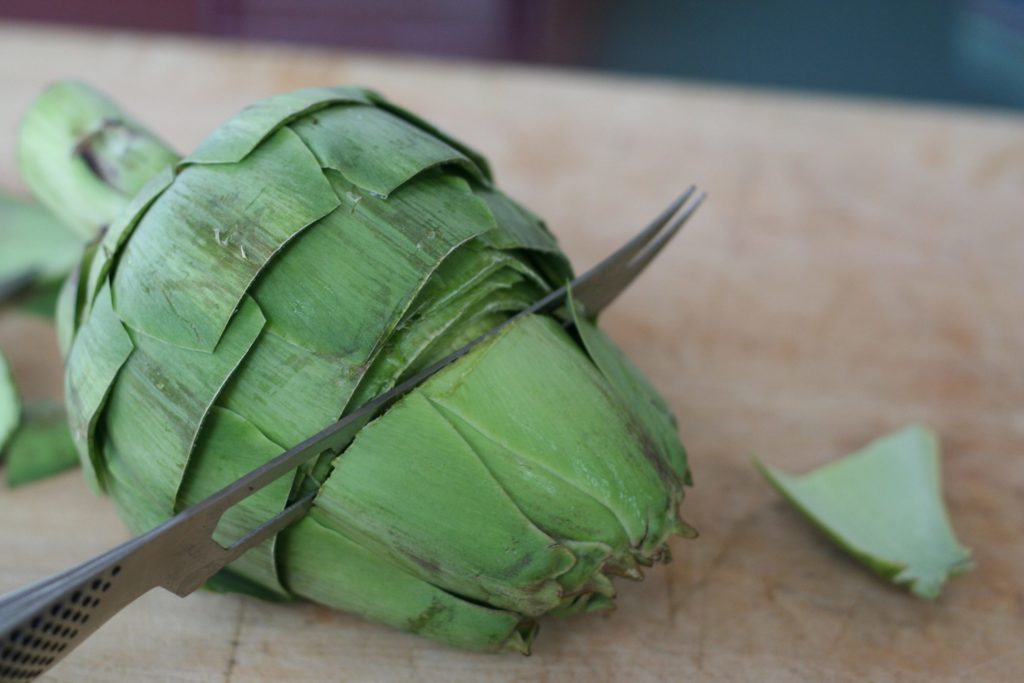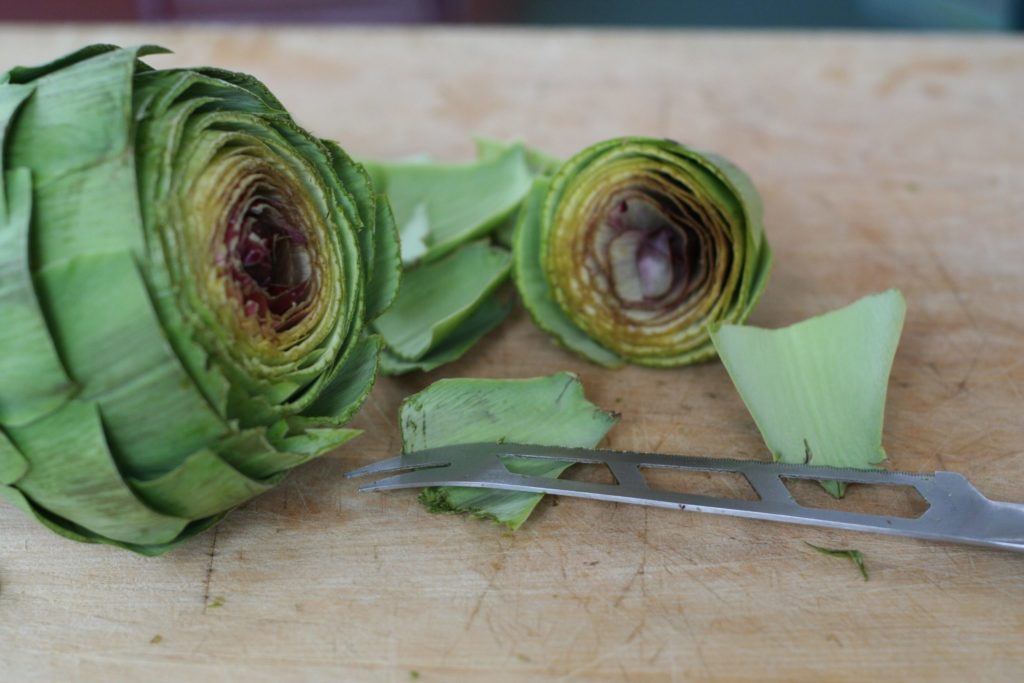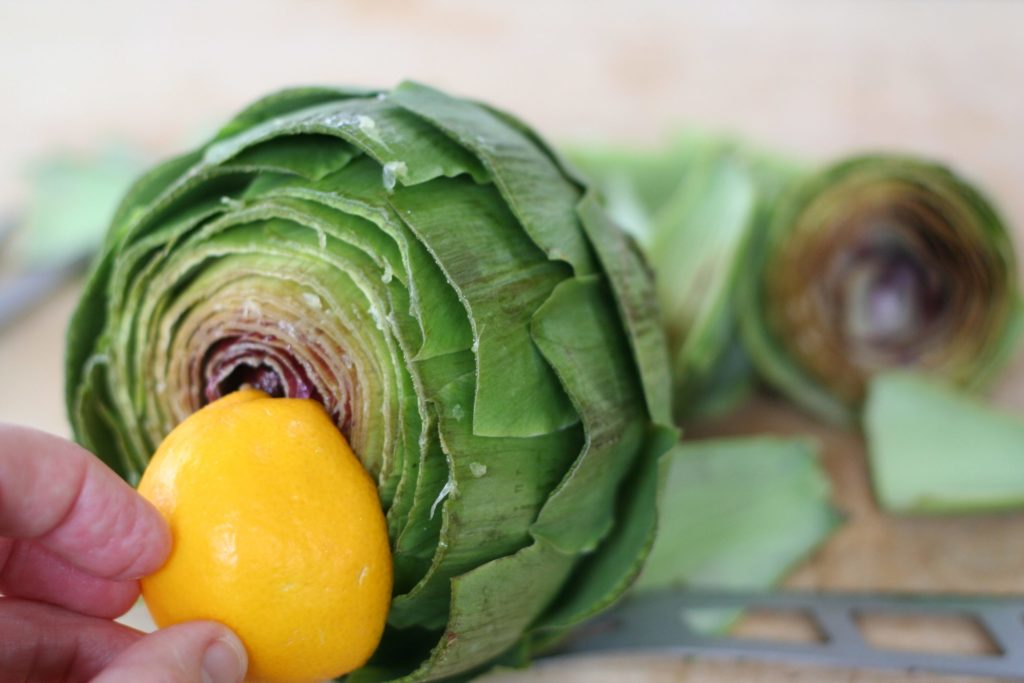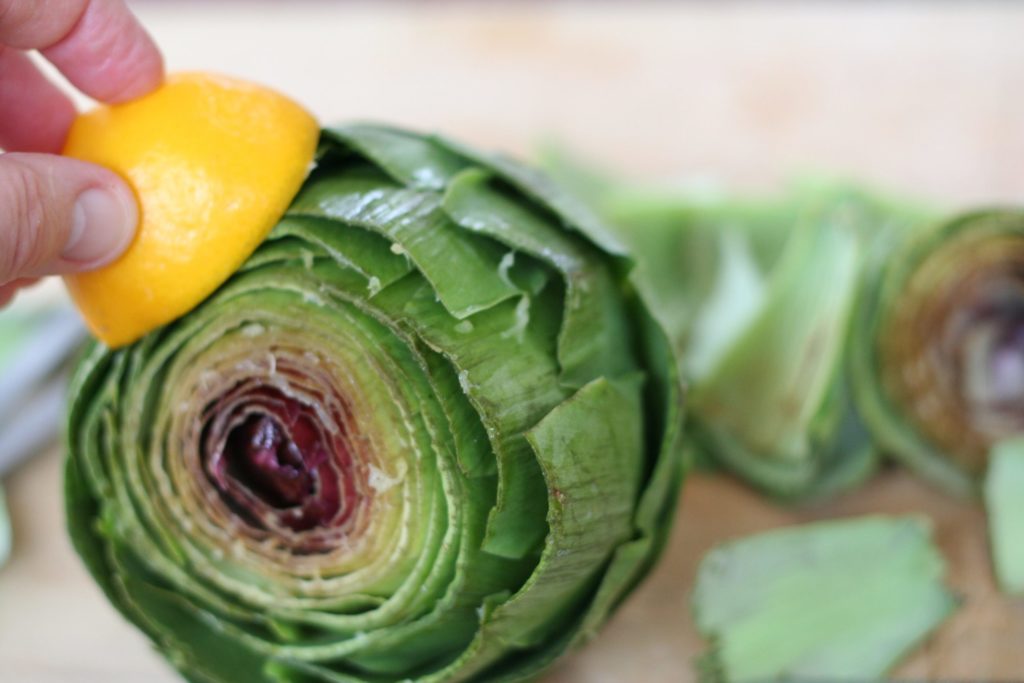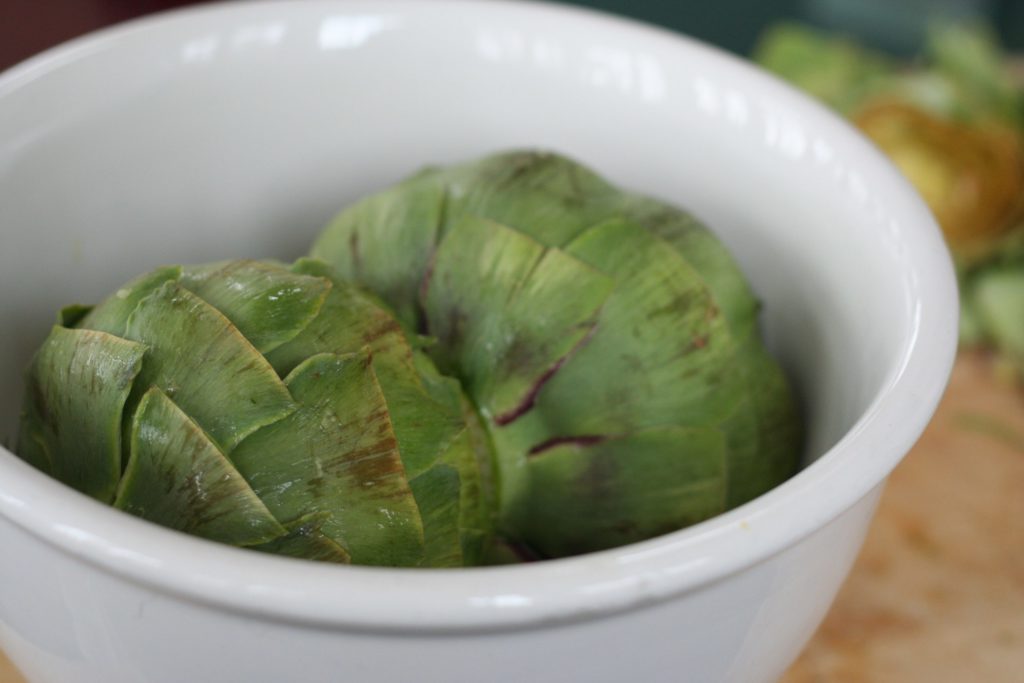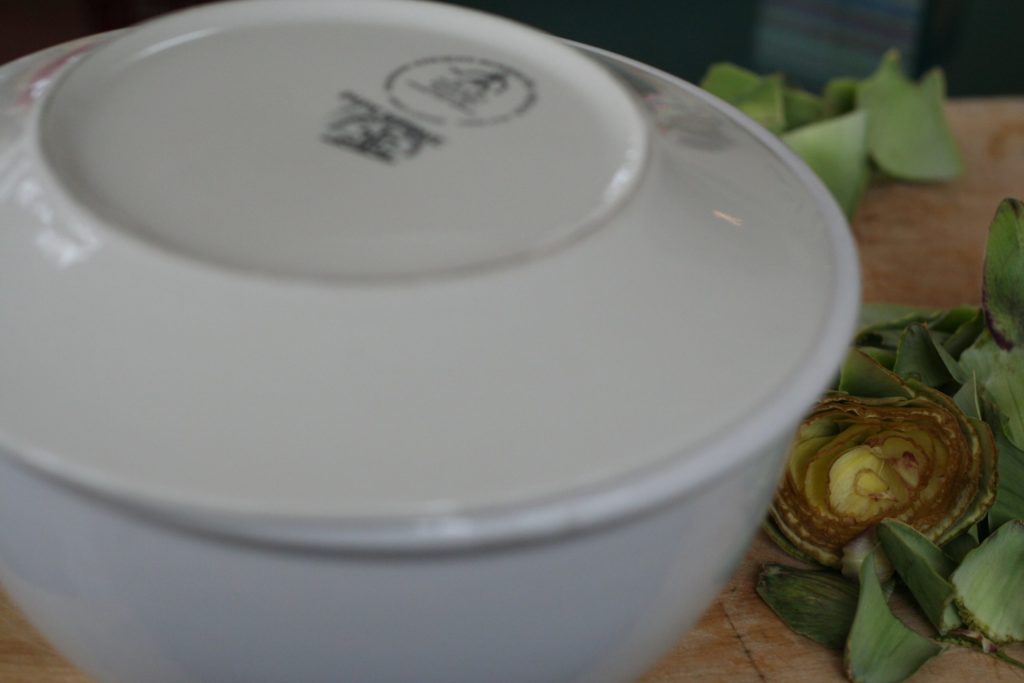I have to thank my husband, David, for this entry. He’s the one who discovered this cooking method for artichokes.
I came to love artichokes when I lived in Northern California. Artichokes can’t be grown just anywhere. They need certain soil and the right growing conditions. Those conditions exist in Southern Europe and, fortunately, in Castroville, California, just south of San Francisco. They grow year-round, but the peak growing season is spring. There is a second abundant season in the fall. Artichokes from California are now beginning to show up in my local markets and I couldn’t be happier.
My family’s favorite method for cooking large artichokes is in the microwave oven, where they cook in their own juices with no added water. Artichokes prepared this way to have a more concentrated flavor and become sweeter. They even have a slightly candied taste if they become dried out when cooked around the edges. The best part is that cooking artichokes in a microwave take a lot less time than with other methods.
I am going to give you the cooking times for a full-sized globe artichoke. In the first photo in this entry, I included a few baby artichokes. You can cook baby artichokes using the same method, but your cooking times must be reduced.
I recommend using a good serrated knife to cut the raw artichoke. You’ll also need a lemon and a pair of scissors.
The tips of artichoke leaves have little spikes. Using scissors, trim the tips off the leaves.
Trim the leaf tips off at about 3/4 of the way up the artichoke. Then, using your serrated knife, cut the top off the artichoke.
You will see the purple center.
Next, cut the stem off the artichoke. I know in Italy they trim and eat artichoke stems, but whenever I’ve done that I’ve found the stems to be very bitter, so I cut them off. You can leave them on and trim them if you are so inclined.
Artichokes oxidize and turn brown easily once they’re cut. To prevent this, rub the trimmed base, the top of the artichoke, and the trimmed leaves with a lemon.
Place the artichokes in a snug-fitting glass, ceramic bowl, or another container suitable for microwaving. The original instructions for this cooking method came from Barbara Kafka’s 1987 book Microwave Gourmet. She used plastic wrap to enclose the artichokes. I no longer use plastic in a microwave due to health concerns. Instead, I place the artichokes in a bowl and cover them with a plate as a lid.
David recommends cooking a single, medium-large artichoke (bigger than a softball) for seven minutes, two medium artichokes for 11 minutes, or four artichokes for 17 minutes. Be careful when you remove the lid so you don’t get burned from the hot steam escaping.
The artichoke is done when you can pull a leaf off easily and cleanly. You shouldn’t be able to lift the artichoke when pulling off a leaf; it should remain resting on the bottom of the bowl. The base of the leaf should be soft, tender, and slide easily off into your mouth when you pull it through your teeth. If it’s still a bit firm, cook the artichokes for another minute or more.
And that’s it! Serve the cooked artichokes with your favorite dipping sauce. We all love artichokes in my house. MM has enjoyed them since he was little, so I am going to tag them as kid-friendly. Even if you don’t think your kids will like them, why not give it a try? I bet many of you will be surprised by how rapidly they’ll disappear.
